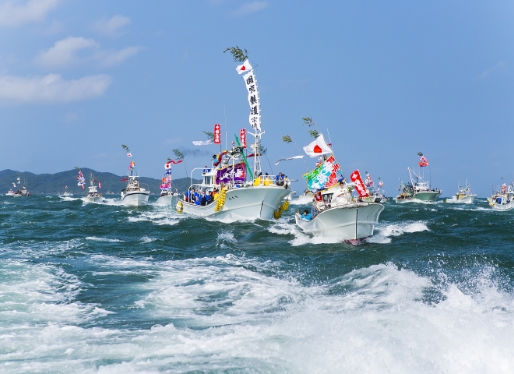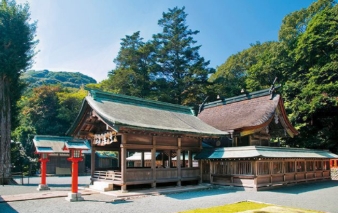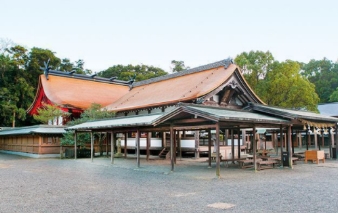
A Legacy of Faith in the Three Female Deities
Establishment of the Three Shrines and Inheritance of the Faith
In the second half of the 7th century, open-air rituals similar to those conducted on Okinoshima began to be performed also at Mitakesan ritual site on the island of Oshima and Shimotakamiya ritual site on the main island of Kyushu.
At that time Munakata Taisha was established as these three sites, linked by a vast stretch of sea, for the worship of the Three Female Deities of Munakata. The oldest Japanese historical documents, the Kojiki and Nihonshoki, both of which were composed in the early 8th century, mention that the Munakata clan worshipped the three female deities at Okitsu-miya, Nakatsu-miya and Hetsu-miya.
The form of worshipping the Three Female Deities of Munakata has been passed down to the present day in rituals conducted mainly at the shrine buildings and safeguarded by people of the Munakata region.
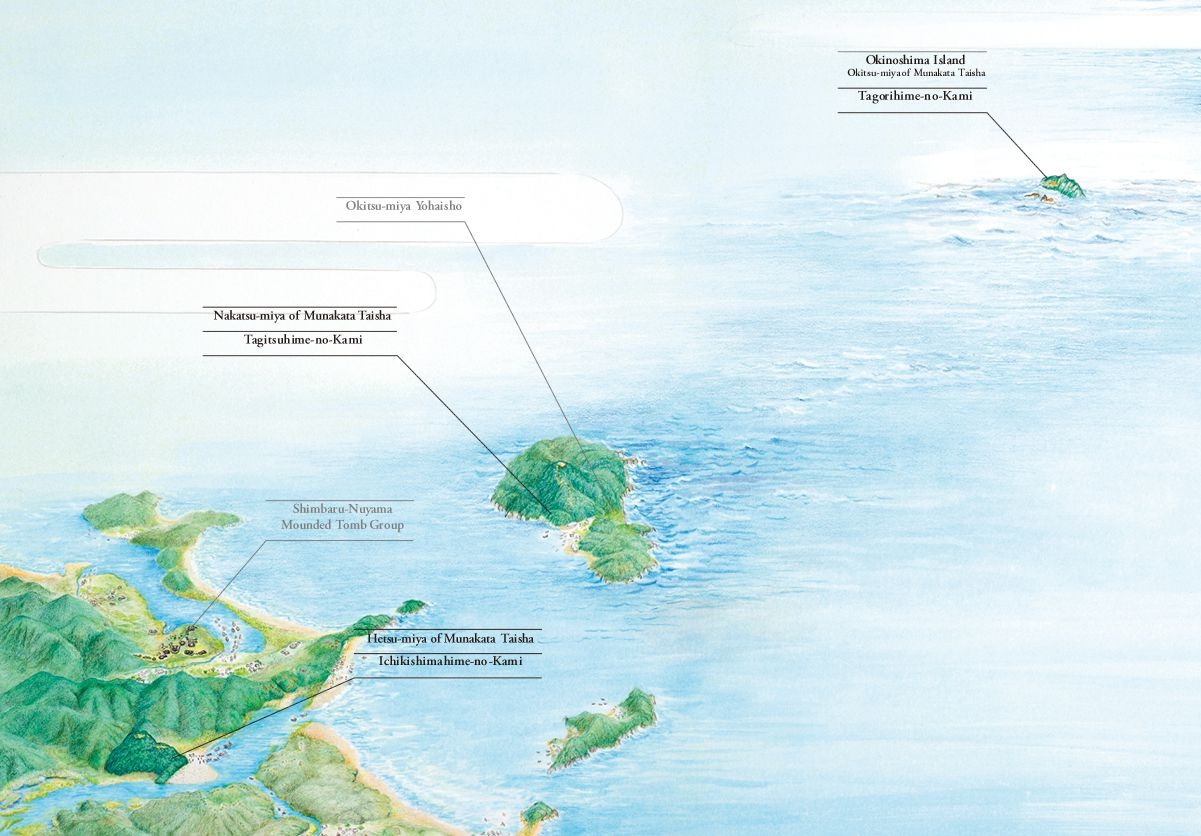
Bearers of a Religious Tradition
― Shimbaru-Nuyama
Mounded Tomb Group ―
The Munakata clan had advanced nautical skills and performed the ancient rituals on Okinoshima while taking part in overseas exchanges.
With the support of the early Japanese governing powers, they began to worship the Three Female Deities of Munakata at the three shrines of Munakata Taisha.
The Shimbaru-Nuyama Mounded Tomb Group, which was constructed from the 5th to the 6th centuries, offers tangible evidence concerning the Munakata clan who sustained the living tradition of worshipping Okinoshima.
The Munakata region forms an integrated sea space that links Kyushu, where a large sea inlet once existed, with Okinoshima, and with Oshima, which is situated between them.
The Shimbaru-Nuyama Mounded Tomb Group is located beside the agricultural land that was once a sea inlet, on a plateau overlooking the sea that stretches out toward Okinoshima.
It consists of both large and small burial mounds, including keyhole-shaped, round, and square mounded tombs built close together along the plateau.
These tombs bear witness to the lives of members of the Munakata clan, who played a key role in overseas exchanges and nurtured a tradition of worshipping Okinoshima.

Remote Worship and Taboos
The Munakata Daiguji (high priest) family, which prospered through its engagement with international trade, continued the tradition of worship at Munakata Taisha when ancient rituals were no longer performed there.
Even since the family's lineage was interrupted at the end of the 16th century, priests and local people have supported the tradition to this day.
The people of Munakata have long fished the waters near Okinoshima, and guards were stationed on the island from the 17th century onward to protect its ocean boundaries; yet customs such as taboos strictly forbidding ordinary people from delivering or removing any object to or from the sacred island have continued to be respected. Some taboos still survive today.
Okinoshima have been preserved almost intact to the present day because of their geographical location, which defies easy access, and local religious traditions such as strict taboos that protect the sacred island. The ancient faith in Okinoshima survives to this day.
Okitsu-miya Yohaisho, which had been built on the northern shore of Oshima by the 18th century, is the place from which to worship Okinoshima, since people are not normally allowed to visit the island. It functions as a hall for worshipping the sacred island from afar.
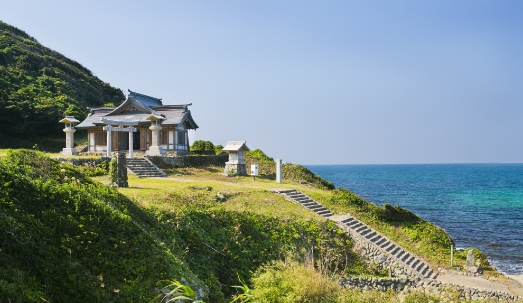
The Miare Festival
Grand Autumn Festival, held from October 1st to the 3rd each year, is the most important Shinto ritual of Munakata Taisha. In the Miare Festival, which occurs at the start of the Grand Autumn Festival, special boats carrying portable shrines, one dedicated to the deity Tagorihime-no-kami of Okitsu-miya and the other to Tagitsuhime-no-kami of Nakatsu-miya, transfer the shrines by sea from Oshima to the Konominato harbor in the mainland, where their sister Ichikishimahime-no-kami of Hetsu-miya awaits. In this way the three female deities come together once a year at Hetsu-miya.
The group of fishing boats advancing on the Genkai Sea, flying their banners that indicate a big catch, is a magnificent sight, and this is a "sea" ritual that clearly bolsters the reputation of the three female deities of Munakata for governing maritime safety.
At the same time, the boats carrying the portable shrines and their attendant boats are all fishing vessels from the so-called "seven ports of Munkata", and this event is also a festival for the people of the Munakata region.
On the last day of the Grand Autumn Festival, the Kannabi Festival is held at Takamiya Saijo to express gratitude to the three female deities that the grand festival has been safely carried out. On that day, many spectators turn out to witness this mysterious Shinto ritual.
